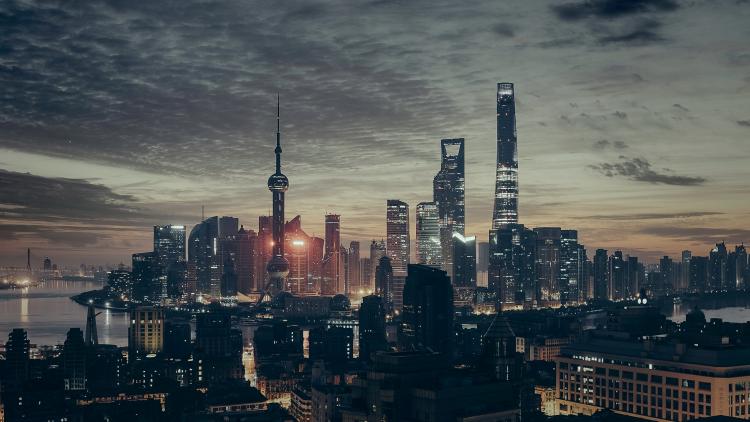
This winter, 39 cities across northern China, including the Beijing-Tianjin-Hebei megalopolis and the Fenwei Plain, experienced alarming surges in air pollution.The uptick in smog means these heavily polluted areas are now unlikely to meet their annual air quality targets. Beijing’s gambit to relax anti-pollution curbs in the face of economic pressures, particularly trade tensions with the US, has not helped. In February, average levels of PM2.5 – hazardous ultra-fine airborne particles, known to cause cancer and respiratory disease – in the region increased by 40 per cent to a startling 108 micrograms per cubic metre, almost three times the national standard (35 micrograms per cubic metre) and over 10 times above the World Health Organisation’s standard of 10 micrograms per cubic metre.
Some northern cities were hit particularly hard: PM2.5 concentrations in Linfen in Shaanxi province and Anyang in Henan province soared to 174 and 163 micrograms respectively. Given that research has shown that each increase of 100 micrograms per cubic metre raises morbidity by 12 per cent, this uptick in pollution across northern China should keep the country’s planners up at night.
The data suggests a troubling pattern of China falling behind on its environmental protection targets. The concentration of PM2.5 particles in January rose 8.2 per cent year on year, while overall air pollution levels rose across 337 Chinese cities.
Shaken by these numbers, Beijing is planning another round of regulatory tightening. Last month, the Ministry of Ecology and Environment rolled out its air pollution battle plan for 2019, which includes a one-year extension of winter anti-smog measures.
It also includes new pledges, including expediting the phasing out of outdated coal-fired plants, the promotion of ultra-low-emission coal technology and cracking down on substandard diesel vehicles.
Although the plan reaffirms the ministry’s commitment to its “war on pollution”, February’s disappointing results put Beijing’s fine balancing act between protecting economic growth and fulfilling environmental ambitions on full display.
It’s clear that stronger measures are required to turn northern China’s skies blue. The consequences of such poor air quality are hard to overstate – from its depressive effect on life expectancy to smog-induced highway closures in Beijing and Shandong province.
Increased pollution levels are also coinciding with the slowest economic growth in almost 30 years. As wages in China rise and an ageing population threatens a demographic crisis, Beijing is trying hard to avoid a recession and fight off the competitive advantage of countries in Southeast Asia.
To counter a slump in domestic demand, the Chinese government decentralised its winter anti-pollution policies in September 2018, a move which now looks like a huge misstep.
Instead of imposing 2018’s nationwide production cuts of 30 to 50 per cent on heavy industry in 28 northern cities, the ministry exempted a number of aluminium, steel, coking and casting companies from production curbs, and allowed provincial authorities in the Beijing-Tianjin-Hebei area to make their own plans to cut production. It also lowered the PM2.5 reduction target from 5 per cent to 3 per cent.
This regulatory flexibility, intended to give some space to local authorities to fine-tune anti-smog measures, has instead allowed heavily polluting industries prevalent in northern China to operate at almost full capacity this winter.
As Shanghai-based analyst Liu Xiaolei commented, only “a very limited number” of aluminium plants were forced to cut back production this season.
As a result of these looser policies, heavy industry production reached record levels in 2018: aluminium exports surged to 552,000 tonnes in January, up 25.5 per cent from a year earlier, while crude steel output set a record of 923 million tonnes in 2018, up 11 per cent from 2017.
During the National People’s Congress in early March, President Xi Jinping spoke out against such backsliding on major sources of pollution, cautioning that the economy must not be boosted at the expense of the environment. The environment ministry has vowed to hold local governments accountable for failing to reach their emissions targets.
However, in his state-of-the-nation speech, Premier Li Keqiang instructed environmentalists to give factories reasonable time to implement corrective actions without outright shutdowns, while promising the business community large-scale stimulus in the form of tax cuts and funding.
Li’s pro-business stance stems from the central government’s concern with domestic issues such as mass unemployment and its need to cushion its economy against the external pressures of the US-China trade war and a global economic slowdown.
Going green has posed challenges not just to China’s economy but also to its rural population. Beijing has used hefty subsidies to mandate cleaner energy in rural homes: in 2018, 3.29 million households in northern China moved to using natural gas heating while 1.5 million homes in the Fenwei Plain switched to electric heating. The transition was abrupt: Chinese officials descended on villages to confiscate coal ovens, even before supply of natural gas had been assured.
Despite the crackdown, many rural residents continue to burn coal, wary of surging utility bills – gas heating can cost an extra 500 yuan (US$75) a month. The removal of coal heaters strained the country’s fledgling natural gas supply and ageing power grid, while expected lay-offs of hundreds of thousands of workers in heavy industries across northern China are putting significant stress on the economy.
As the country’s growth rate is expected to hit another record low this year of 6.3 per cent and the global economic climate shows no signs of improving, Beijing must brace for a difficult battle to balance development and the environment, and to reconcile political and economic realities that often pull in opposite directions.
Via As China's economic growth engine slows, is its war on pollution losing steam?
Photo by Adi Constantin on Unsplash

 App Store
App Store  Play Store
Play Store 


